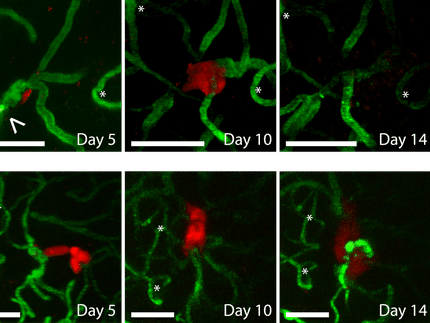How cancer cells alter bone tissue
Migrating tumour cells produce a protein that aids them to set up home in bones
Advertisement
cancer cells that migrate to the bone acquire a unique trait: They start to express the protein cathepsin K. Researchers from the University of Freiburg and the BIOSS Centre for Biological Signalling Studies have now solved why it is important for the migrating cells to produce this protein. Polymer chemist Prof. Dr. Prasad Shastri, the Director of the Institute of Macromolecular Chemistry and the pharmacist Jon Christensen discovered that cathepsin K activates another protein, which helps the cancer cells to alter their microenvironment so that they are able to develop into tumours.
If a tumour develops metastases, the chances of the patient’s survival will be severely diminished. Cancer cells that leave the primary tumour, travel through the body, and set up home in distal organs such as lungs and bones start to express cathepsin K. Cathepsin K is primarily found only in the bone and is secreted by osteoclasts. These cells resorb bone tissue to maintain, repair, and remodel the bone. Why it is important for migrating cancer cells to produce cathepsin K has remained a mystery, however.
Shastri and Christensen found out that the production of cathepsin K by migrating cancer cells might promote their ability to survive in the bone environment. In cell cultures, cathepsin K activated matrixmetalloprotease-9 (MMP-9), one of the key regulators of tumour development. MMP-9 can digest the bone matrix thereby allowing the arriving cancer cells to adapt and survive in their new environment. Also, MMP-9 activates certain factors that promote new blood vessel formation, which is necessary for bringing nourishment to the tumour cells. Therefore, when cancer cells arrive in the bone, they have many tools to alter their microenvironment and develop into tumours. “Further studies are, however, needed to see how this interplay between cathepsin K and MMP-9 actually plays out in vivo and how it promotes tumour aggressiveness and metastasis,” said Shastri. “Nevertheless, this novel protease network paradigm might be explored as a therapeutic target in future.”






















































